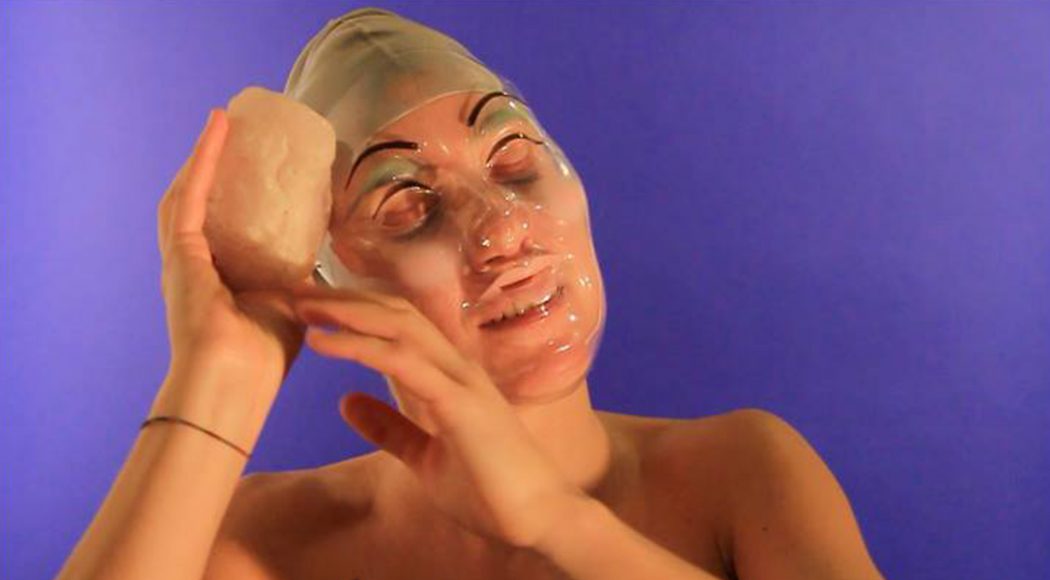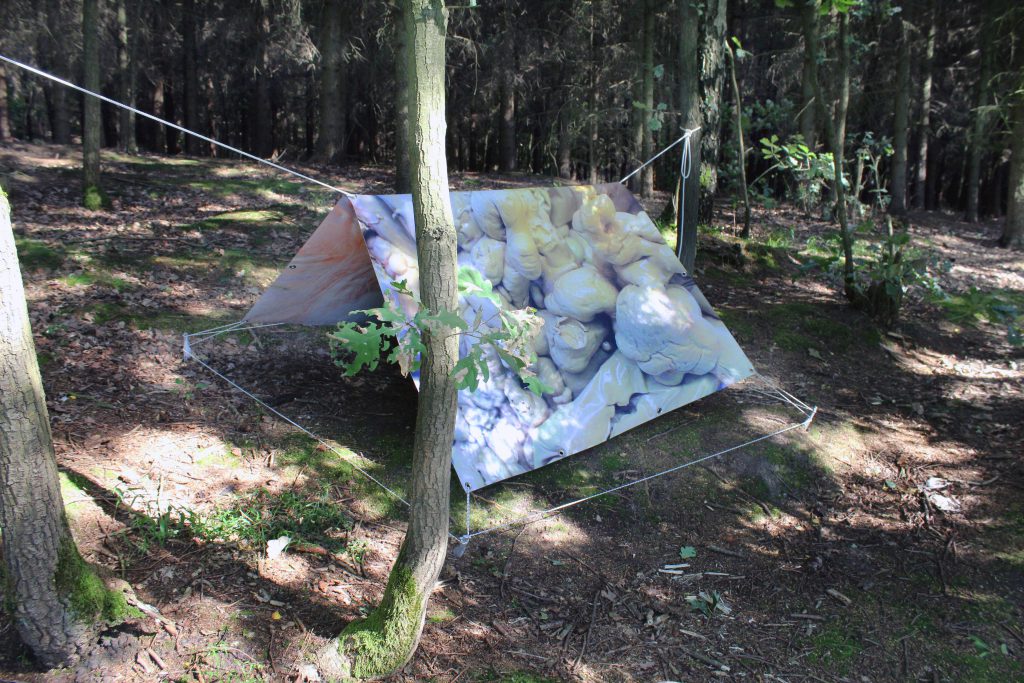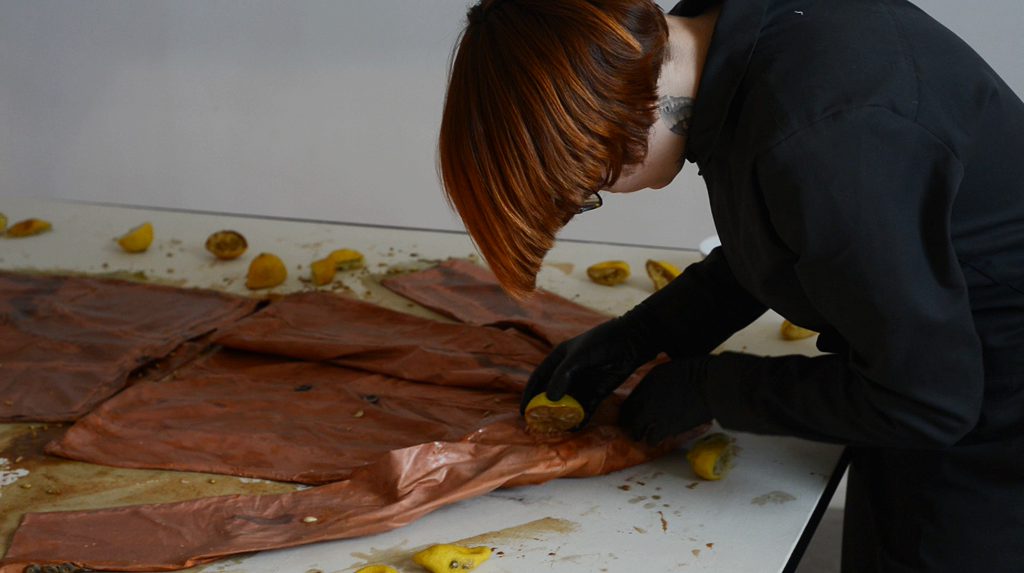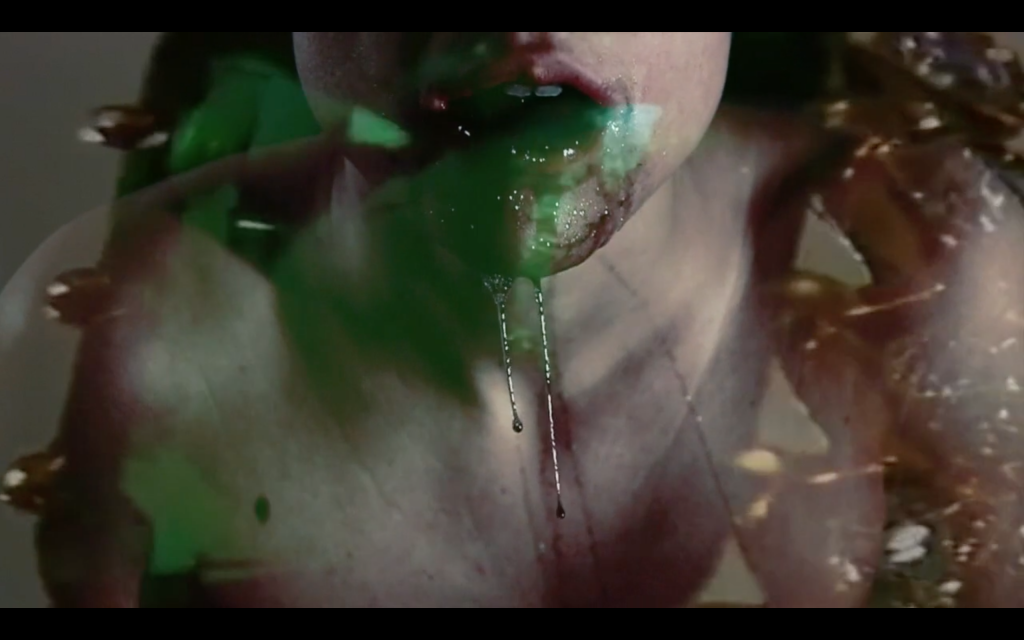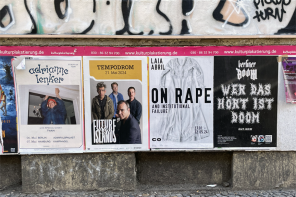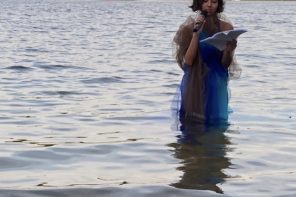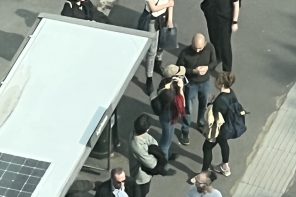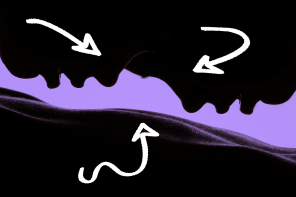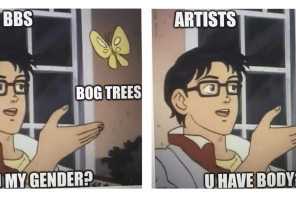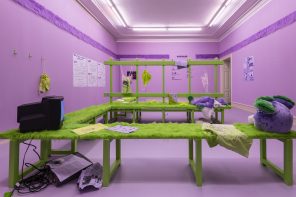A New Prescription For Insomnia is a state of mind, a meditation exercise, a survival guide.
Curated by Berlin and now Miami-based artist GeoVanna Gonzalez, the exhibition invites the visitor to reflect on their own mental hygiene strategies in an era of massive information consumption. The show, set up in an old butchery, features the works of Paul Barsch, Adam Chad Brody, Omsk Social Club, Julia Colavita, Michele Gabriele, Silas Parry, Zoë Claire Miller, Miller Robinson, Mark Stroemich, and Lorenzo Sandoval.
COVEN BERLIN sat down with GeoVanna Gonzalez to get a better inside of the project:
What was the idea behind the show?
“A New Prescription For Insomnia” is about “emptying” yourself from the manic-inducing life that has led us to a state of being always-on and in a perpetual state of insomnia. The pieces in the exhibition show different tactics and methods of contemporary survivalism, and the evolution that happens during this form of escapism. In a way the exhibition and its artists have established a new civilization within themselves, while also building tools of resistance against the accelerated consumer culture we live in.
I wanted to curate an exhibition as a counterpart to Berlin Gallery Weekend. A hideout from all the commercialized chaos. Berlin as a creative city has so much to offer and having an event like Gallery Weekend really doesn’t give the artist-run and project spaces (which are the backbone of the art scene here) the visibility they deserve. As Gallery Weekend is mostly set up for outsiders and tourists that do the speedway tour, “A New Prescription For Insomnia” can be thought of as place for locals, a refuge, somewhere to breathe and think: tucked away, off the grid, disconnected.
What made you focus on escapism? Why do you think this is currently relevant?
I feel that we are all living in a moment of time when we’re trying to find an exit – a way out, or a relief, if only temporarily. So many people are desperate to escape an accelerationist lifestyle in which you clock in and out of the day as if you were always on speed. It’s no wonder many are trying to reconnect with their ‘true selves’ through New Age methods, self-healing, mindfulness, all that – but even these tactics are commodified as soon as they emerge (or re-emerge).
I think that by speculating on different methods or ideas of escape, the show creates a sense of hope where you might otherwise feel trapped. I am not sure if escaping is really the answer, but let’s face it, we’re all trying to escape from something.

Lorenzo Sandoval, Shadow Writing (Talbot/Babbage), 2017, HD Video stereo 10′, still frame
Where does the title of the exhibition come from?
Someone once told me I have poor digital hygiene (ouch) when I told them about my sleeping pattern (because I had no pattern really), small signs of insomnia they called it. One good digital hygiene practice is to not look at any screens for an hour or two hours before going to sleep.
Do you know the times you lay your head down to fall asleep, but your brain is still fully active, so you turn over and find yourself clicking and swiping and looking into the bright screen again? Game over. Digital hygiene failure. Insomnia is certain.
“A New Prescription For Insomnia” is about trying to find a method, a way out, or a temporary hideout from our accelerated lifestyle. We seem to all complain and hate our own active online appearance that infiltrates our daily life and sleepless nights, but can’t seem to disconnect from it. We are addicted to participating or believing that our existence would vanish if we weren’t a voluntary member to our precarious labor online.
A few of the works that really reflect on these ideas are:
Omsk Social Club’s The Survival Guide for URL to IRL, which includes a list of contributing writers such as Franco ‘Bifo’ Berardi, Martin Jackson, GeoVanna Gonzalez, Kei Kreutler, Dorota Gaweda, Egle Kulbokaite, Kristof Trakal, Nat Marcus, Paul Feigelfeld, Waldo Pardon, Ben Vickers, Charlotte Szász, and Penny Rafferty, based on different methods and tactics which relate to survivalism.
As well as Miller Robinson A New Prescription For Insomnia Instructional Guide: 29Cu+30Zn/l +3 Li = L3, that contains information on symptoms as well as an instructional diagram and glossary of elements needed for production of the proposed treatment.
Do you feel that it has a political relevance? How does it connect to intersectional queer feminism?
We’re in a time when countries such as America, England and France are trying to isolate and separate themselves, creating “nationalist islands”, but this vision pushes a large percentage of their populations to look for a way out, or to disconnect but also reconnect in a community and location where you are not judged or dehumanised based on your religion, race, or gender. It’s a savage world we’re living in, always being watched, needing to be hyper-aware, and looking over your shoulder.
One of the works in the show, Paul Barsch’s ‘Stare Moons’, combines household screen holders and adapter parts with integrated naive sculpted reliefs depicting angry faces staring at each other, the shapes recall depictions of the moon. In the widest sense the work is about a progression, a merging and inter-changeability of human/inhuman and technological worlds, as well as aspects of control and surveillance. The moon, which plays an integral part in esoteric and conspiracy thought constructs, it is always staring down at us, watching us, never blinking.

Paul Barsch, Stare Moons, 2017, Pulvercoated metal, synthetic clay, 50 x50 x 50 cm
How is it for you as an artist to curate other artists?
As an artist working in installation, sculpture, and mixed media where I am researching ideas of identity through aesthetics, forms of or lack of communication in our society, it naturally makes sense for me to extend my practice into curating.
In a way, I view curating other artists’ works in the same way I would put together an installation for myself. The architecture of the space is just as important to the concept as the artists’ works, which is why I wanted to curate the show at HORSEANDPONY Fine Arts. Everywhere you look you find little bits of history and can really visualize what used to inhabit the space. It became a butcher shop around 1910, then a bakery, now an artist run space.
There are doors that used to lead somewhere but now are bolted shut. Old bike tires attached to copper poles because someone must have lost their bike key. In the front room there are white tiling across the wall and across decorative tiling with teal floral patterning. It’s like walking into a historical shipwreck.
Why do you think there is a current interest on mindfulness and mental health techniques. How is this becoming commodified by capitalism? Is there really a way to “escape”?
“A New Prescription For Insomnia” offers clear vegan capsules, at free dispense, which you can find on the front desk. It is playing with the concept of the placebo effect: an empty pill to emptying oneself.
Behind the front desk, you will find Adam Chad Brody and Julia Colavita’s video work; The Gem Drug, which is a journey that probes the cultural significance of gems and crystals as luxury items, spiritual objects, and commercial fetishes. The main characters, played by Adam Brody and Julia Colavita, set forth on an intense journey to ‘return the gems back to the inside’ to the depths from which they came and belong. Using their own bodies as a metaphor for the Earth, they ‘eat the gems, drink them, and absorb them into their pores’ in a ritual of carnality. Charted by graphs, meters and diagrams, The Gem Drug attempts to scientifically measure and mark their journey to ‘the inside,’ blurring the line between science and myth, authentic and performative, and spiritual and recreational.
As a culture, we are obsessed in the quick fixes, enjoy and believe in the ritualistic act of consumption. But even when you try to relieve yourself from intaking too many unnecessary products, the marketplace will still find a way to commodify “nothingness”, as in the empty pill is the prescription drug for emptying yourself – anything to consume for consumerism to relieve the pain.
And sure there is an escape… you just have to keep on refreshing it every so often and leave no traces behind. And always remember, Rule #1:
NEVER GET TOO COMFORTABLE.
Is this exhibition part of a bigger project? What are your future plans?
Yes. I can’t leak it out too much but “A New Prescription For Insomnia” is the pilot to a larger project I have been developing for the past year. The project will unfold by continuing to work with the concept of being on a island, and relating to seclusion, escapism, and survivalism. It will be developed through collaborative modes of production which I will work on in Miami, Florida, and surrounding islands such as Puerto Rico.

Julia Colavita, Insulation (coils II), 2016, Polystyrene foam, acrylic paint, reflective spray paint, varnish, spray paint, flax, wire 30 x 30 cm
Interview by Lo Pecado
Cover image by Adam Chad Brody & Julia Colavita (film still of Gem Drug, 2015, 6.5 minutes)
“A New Prescription for Insomnia”, curated by GeoVanna Gonzalez, can be visited at HORSEANDPONY Fine Arts until 21 May 2017. For further information on opening hours and events, you can contact them on their website.

